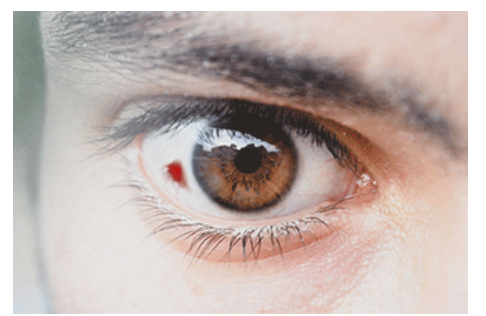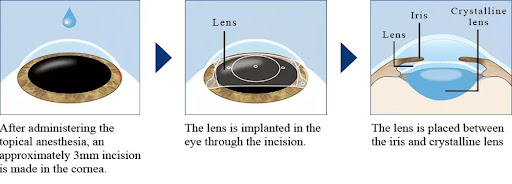Our eyes are incredible organs that allow us to perceive the world. However, even the slightest eye issue can significantly affect our vision. One such issue is subconjunctival hemorrhage, a condition where blood collects in the whites of your eyes, resembling a bloodshot appearance.
To address this eye condition and ensure your eye health is in expert hands, visit Eyeonce Eye Clinic. Our dedicated and experienced ophthalmologists, headed by Dr. Paik Dong Won and Dr. Jung Sae Rom, can help you understand, manage, and overcome subconjunctival hemorrhage, ensuring your eye stays healthy and vibrant.
Causes and Risk Factors
Subconjunctival Hemorrhage (SCH) can occur for various reasons, and understanding its causes and risk factors is essential for identifying potential triggers and preventing its occurrence.
Diagnosis
- Minor trauma – One of the most common causes of subconjunctival hemorrhage is minor trauma to the eye or the surrounding area. It can happen during everyday activities like rubbing your eyes too vigorously, poking your eye accidentally, or even from foreign objects coming into contact with the eye.
- High Blood Pressure – Elevated blood pressure can stress blood vessels throughout the body, including those in the eyes. Over time, this increased pressure can lead to the rupture of tiny body blood vessels, resulting in subconjunctival hemorrhage.
- Blood-thinning medications – Medications like aspirin, anticoagulants, and antiplatelet drugs can interfere with the body’s clotting ability. It can lead to easier bleeding, including within the eye’s conjunctiva.
- Eye infections – Eye infections, such as conjunctivitis or other viral or bacterial infections, can lead to inflammation and irritation of the conjunctiva. This irritation can potentially cause blood vessels to rupture.
- Vitamin deficiencies – certain vitamin deficiencies, especially vitamin K, can impair the body’s ability to form blood clots. It can make blood vessels more susceptible to ruptures.
- Underlying health conditions – certain underlying health conditions, such as bleeding disorders (e.g., hemophilia), vascular disorders, or systemic diseases like diabetes, can make blood vessels more fragile and prone to rupture.
- Lifestyle factor – Lifestyle choices can play a role in subconjunctival hemorrhage. Excessive alcohol consumption, smoking, and prolonged use of digital screens (which can lead to eye strain and irritation) may weaken blood vessels in the eye.
Understanding these causes and risk factors is crucial for individuals to take proactive steps in preventing subconjunctival hemorrhage. Moreover, suppose you have an underlying health condition or are taking medications that may increase your risk. In that case, you must consult expert eye care professionals like Eyeonce Eye Clinic for proper guidance and management of your condition.
Symptoms
Unlike other eye conditions, subconjunctival hemorrhage does not cause pain or vision changes. The hallmark symptom of this eye condition is the noticeable redness in the eye and the following:
- Redness
- No pain
- No vision changes
- No discharge
Suppose you experience unusual symptoms in your eye, such as redness that could indicate subconjunctival hemorrhage. In that case, it is advisable to consult an eye care professional for a proper diagnosis and guidance on any necessary treatment or monitoring. Reputable clinics like Eyeonce Eye Clinic are equipped with experienced eye doctors, Dr. Paik Dong Won and Dr. Jung Sae. We also provide customized treatment using state-of-the-art technologies. At Eyeonce, we help your eyes receive the best possible care.
Treatment and Diagnosis
The treatment for subconjunctival hemorrhage typically depends on the underlying cause and severity of the condition.
However, the most known treatment for this eye condition is artificial tears. Lubricating eye drops or artificial tears can relieve minor irritation or dryness associated with subconjunctival hemorrhage. These drops can help maintain eye comfort during the healing process.
For patients seeking reassurance and monitoring of their subconjunctival hemorrhage, Eyeonce Eye Clinic offers expert care and guidance. Our experienced eye care professionals can assess the condition, confirm the diagnosis, and provide peace of mind that the hemorrhage is not a sign of a more severe underlying issue.
When to see an eye doctor
Though subconjunctival hemorrhage is typically harmless and resolves on its own, there are specific situations in which it is advisable to see an eye doctor, such as:
- Severe trauma
- Pain or discomfort
- Vision changes
- Recurrent subconjunctival hemorrhage
These situations above call for immediate attention and medication to rule out any serious underlying issues and ensure proper care and treatment. Always prioritize your eye health and consult with a qualified healthcare professional or eye care specialist such as from Eyeonce Eye Clinic when in doubt.
Why choose Eyeonce Eye Clinic Gangnam for subconjunctival hemorrhage treatment?
Utmost Patient Care
Our eye care professionals and staff ensure to give you your money’s worth. We guarantee you receive the best medication possible and assure you that you are guided and understood, making you feel comfortable and confident at every step.
Comprehensive Consultation
Eyeonce Eye Clinic offers comprehensive eye examinations to evaluate your condition and determine the best eye strain treatment. Our ophthalmologists take their time to cater to your questions and address your concerns, ensuring you make an informed decision about our vision correction options.
Expert Eye Doctors
Our ophthalmologists, Head Director Dr. Paik Dong Won and Medical Director Dr. Jung Sae Rom, are highly knowledgeable and adept in treating eye strain. They always use the latest techniques and technologies to ensure optimal results.
Frequently Asked Questions (FAQs)
Subconjunctival hemorrhage is diagnosed through a physical eye examination by an eye care professional. Medical history, blood pressure measurement, and sometimes additional tests may be conducted to determine the underlying cause.
Yes, subconjunctival hemorrhage recurs in some individuals, significantly if underlying health issues or lifestyle factors increase the risk of blood vessel ruptures.
Subconjunctival hemorrhage is a common eye condition characterized by the sudden appearance of blood in the white part of the eye (the sclera) due to the rupture of tiny blood vessels in the eye conjunctiva, the clear membrane that covers the sclera.
Conclusion
In conclusion, subconjunctival hemorrhage may appear alarming due to its suddenness in the eye, but it is usually a benign and self-limiting condition. While SCH typically does not cause pain, discomfort, or vision changes, it is vital to understand its causes, risk factors, and when to seek medical attention. For those seeking expert care and guidance for subconjunctival hemorrhage, Eyeonce Eye Clinic stands as a trusted eye clinic. With a team of experienced eye doctors, Eyeonce offers comprehensive eye examinations and personalized care to ensure your eye health is in good hands. Book an appointment with our ophthalmologists today!



